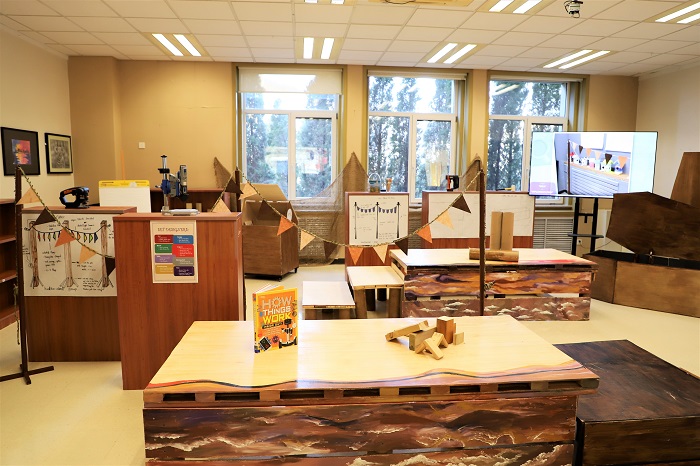We use cookies to improve your online experiences. To learn more and choose your cookies options, please refer to our cookie policy.
Open Days
Register for our Open Day
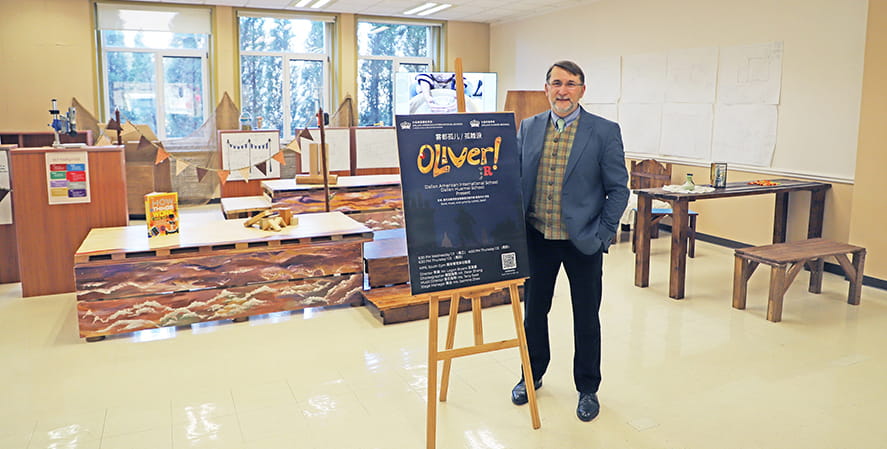
On January 11 and 12, 2023, we were able to enjoy the show on the Dalian American International School stage. Oliver! The Musical brought the magic of the 1830s Industrial Revolution England to our community as the heartfelt story of Oliver Twist was told at DAIS.
We're sure you all noticed the carefully elaborated set design - stage furniture, pieces of scenery and props - that perfectly reflected the atmosphere and served as the key items during the play. Benches and tables, coffins (do you probably remember that one of the main characters was an undertaker?), a comfy bed, handkerchiefs and vases, and of course a bridge in the middle of it all - these objects were fully functional on stage.
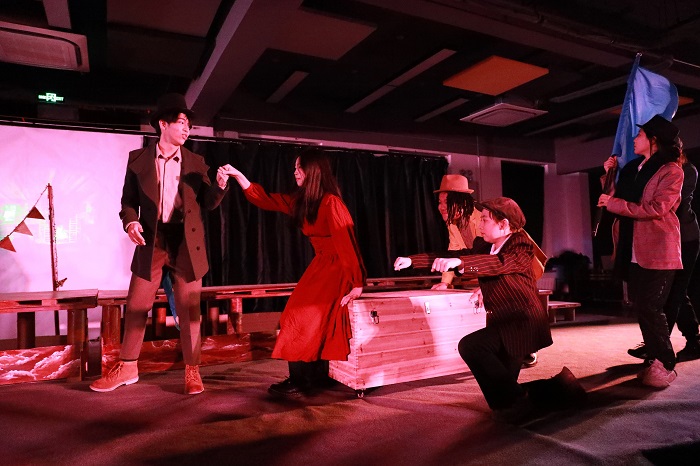
The entire school was involved in the performance including the art and design department as well as student and parent volunteers who worked tirelessly before and during the grand premiere to bring the director's ideas to life. The Engineering/Product Design students were integral in providing props for the musical. After the show, we went behind the scenes and talked to the students involved in this production. Let's drag to light how the set design for the 'Oliver!' was created.
This set design project was a joint initiative of Mr. Matvejevs, secondary design teacher, and Mr. Bryant, drama teacher and musical director.
Dmitry Ulyakhin, Grade 11: "It was August when Mr. Bryant came into our design classroom to talk about the musical production and present his needs. As someone who loves musical theater and wished to join the class this year for my applied studies, I immediately saw an opportunity of helping my friends."
Design students were divided into groups to take on different parts of the set and started working.
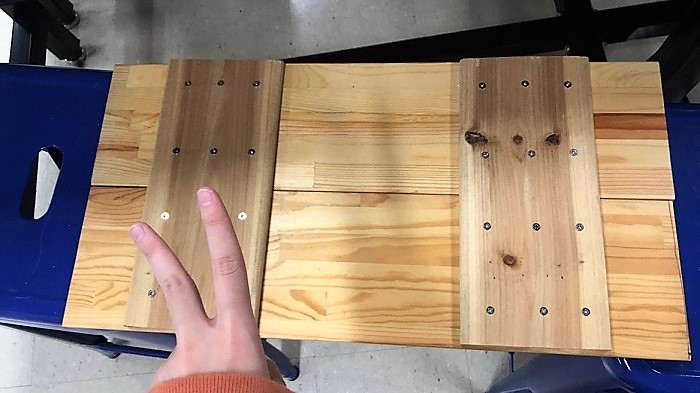
Smaller props were easier to make, and the students could focus more on decorating pieces, painting them and also helping other groups. The largest projects, such as the coffins or the bridge, took full four months of tireless work to put all details together.
Romy Chu, Grade 11: "Our group have completed the prop coffin for the drama production. The coffin was constructed using a variety of carpentry techniques, including cutting, sanding, and finishing. The coffin was designed to be lightweight and easy to transport. It also needed to be durable and able to withstand the rigors of a theatrical production. The coffin was used to great effect in the performance and was a key element in creating the desired atmosphere."
As set designers, students' role was to bring together the needs of the production with their own creative ideas and experiences and to ensure that their designs are appropriate, practical, functional, and completed on time.
Dmitry Ulyakhin, Grade 11: "The first difficulty we faced happened immediately after we split up into groups – online learning. We spent our time doing research related to our project, building the whole picture of the problem and developing ideas. And when we came back from online learning, we were thrown straight into the building process because we didn't have much time left before the performance. However, I liked how people in my class managed to get through this and overcome difficulties. We had to come for hours after school to work extra if we wanted the play to happen. Nothing stopped us from making the play happen."
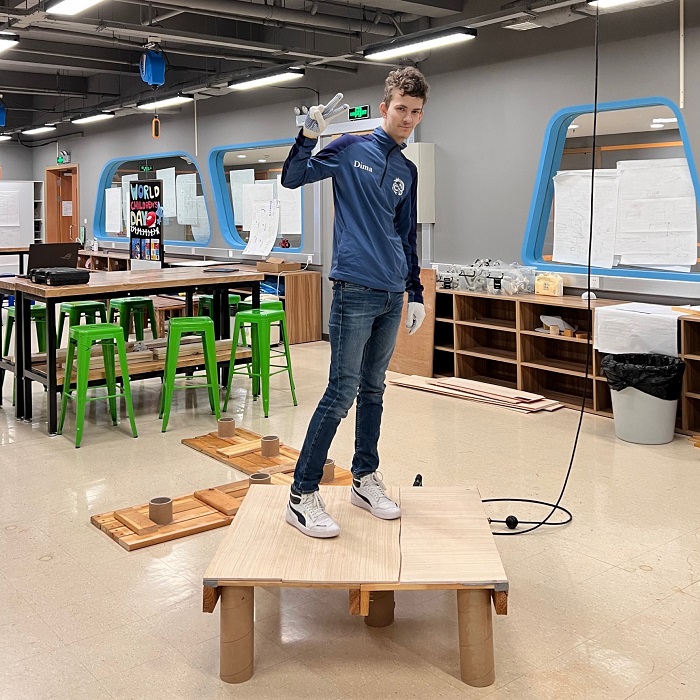
Set design is very different from simple drawing: a theater set must work in practice, in a performance. Student designers needed to think about durability of pieces (ensuring they don't fall apart during the performance and don't pose any risks) and realistic looks. Props also had to be lightweight and easy to transport during a stage change.
Students put lots of effort into finding the right materials and adopting creative and efficient approaches. They were flexible, improvised and did necessary research all along. Their ideas were bright and practical.
David Qian, Grade 9: "In general, our project, the coffin, was good in geometrical strength - stable and well-built. The structure of the supporting beam inside the coffin enabled the whole project to become solid."
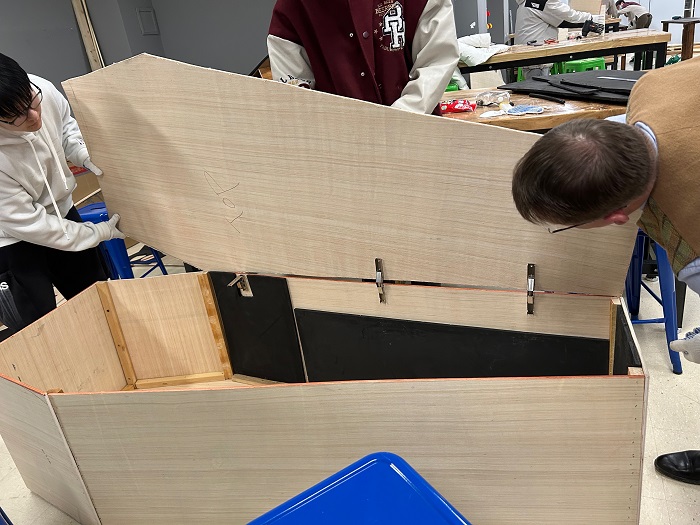
Mr. Matvejevs suggested professional design choices to students too, such as the reinforced platforms, or thick cardboard tubes for the legs. Team members made necessary calculations and tried out ideas before putting together final pieces.
Dmitry Ulyakhin, Grade 11: "For both ease of movement and safety of female actors wearing dresses, we made the first sets of stairs as close to the ground as we could to make sure they would feel them as they approach, while still gaining elevation. For just over 50 cm of the full bridge’s height, we had 2 steps for each stair which made the difference between each step’s height slightly less than that of staircases at our school. It made using the bridge very convenient for the actors."
All in all, the design class have managed to achieve tremendous results. They created a performance space that was interesting, engaging for the audience, and responded to the social, historical and cultural context of the production.
Alex Biondo, Grade 9: "I’d say the end project was generally successful, especially considering our lack of related experience. However, there were several details that I feel could have been done better. Overall, a learning experience, and one that ended decently."
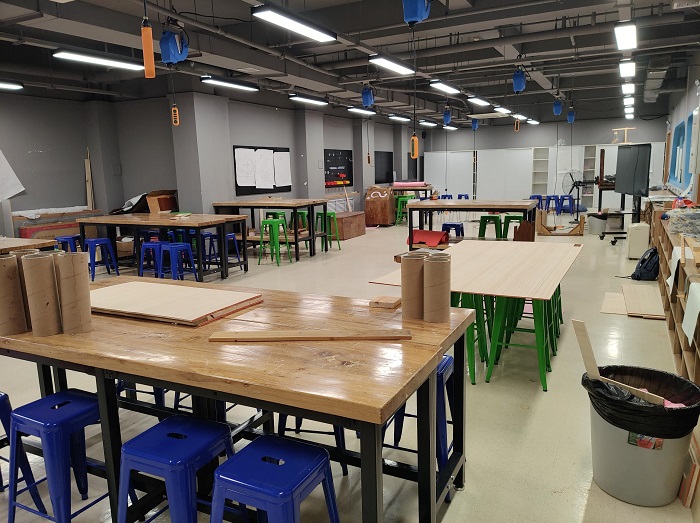
Students learned a lot and developed necessary skills.
Romy Chu, Grade 11: "Our group demonstrated an understanding of the tools and techniques necessary to complete the project. We were able to accurately measure and cut the wood to the correct dimensions and assemble the coffin with minimal assistance. We also showed a good understanding of the safety protocols, were able to use the tools safely and efficiently and made adjustments to the design as needed. This experience was invaluable and will be useful in future woodworking projects."
Some students got a good dose of inspiration while working on this project and seriously consider majoring in Engineering and Project Design in university:
Dmitry Ulyakhin, Grade 11: "I now have a different view of the work engineers do. As a person interested in getting an engineering degree in the future, this project had a colossal amount of insights into this field."
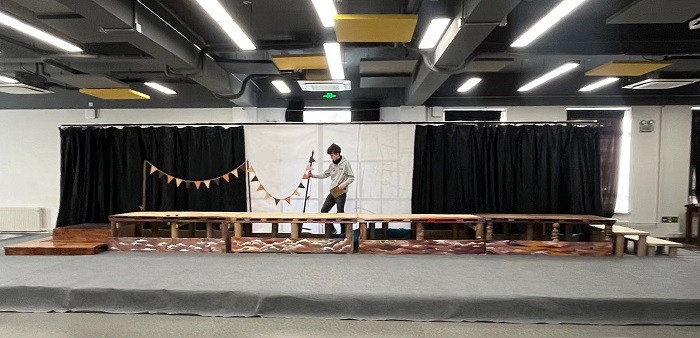
When the performance was over, the furniture and props were moved back to the secondary school building. We didn't want these items to end up in a closet, so the Engineering and Product Design teacher Mr. Slava Matvejevs came up with the idea to organize a large exhibition to showcase the whole process of stage design.
It was a difficult journey, but with great and inspiring results in the end. I wanted students to be proud of their work, see their products on stage, and against all odds, hold all the pressure and action (including the painful process of moving all the items from the Design Lab to the MPR). The musical was a success for many reasons and the work that we put in with the design students was a large part of that success. This is how we promote the development of a growth mindset as part of our school culture.
Mr. Slava Matvejevs
Engineering and Product Design Teacher
Please stop by the first-floor gallery next to the IT Office in the DAIS secondary building to see the wonderful student work on display!
